Daily History Lesson – December 16
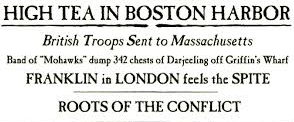
1773 – In Boston Harbor, a group of Massachusetts colonists disguised as Mohawk Indians boarded three British tea ships and dumped 342 chests of tea into the harbor.
The midnight raid, popularly known as the “Boston Tea Party,” was in protest of the British Parliament’s Tea Act of 1773, a bill designed to save the faltering East India Company by greatly lowering its tea tax and granting it a virtual monopoly on the American tea trade. The low tax allowed the East India Company to undercut even tea smuggled into America by Dutch traders, and many colonists viewed the act as another example of taxation tyranny.
When three tea ships, the Dartmouth, the Eleanor, and the Beaver, arrived in Boston Harbor, the colonists demanded that the tea be returned to England. After Massachusetts Governor Thomas Hutchinson refused, Patriot leader Samuel Adams organized the “tea party” with about 60 members of the Sons of Liberty, his underground resistance group. The British tea dumped in Boston Harbor was valued at $18,000.
Parliament, outraged by the blatant destruction of British property, enacted the Coercive Acts, also known as the Intolerable Acts, in 1774. The Coercive Acts closed Boston to merchant shipping, established formal British military rule in Massachusetts, made British officials immune to criminal prosecution in America, and required colonists to quarter British troops. The colonists subsequently called the first Continental Congress to consider a united American resistance to the British.
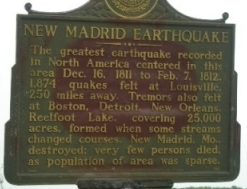
1811 – In the Mississippi River Valley near New Madrid, Missouri, the greatest series of earthquakes in U.S. history began when a quake of an estimated 8.6 magnitude on the Richter scale slammed the region. Although the earthquake greatly altered the topography of the region, the area was only sparsely inhabited at the time, and there were no known human fatalities.
The earthquake raised and lowered parts of the Mississippi Valley by as much as 15 feet and changed the course of the Mississippi River. At one point, the Mississippi momentarily reversed its direction, giving rise to Reelfoot Lake in northwest Tennessee. A 30,000-square-mile area was affected, and tremors were felt as far away as the eastern coast of the United States, where the shock was reported to have rung church bells. Additional earthquakes and aftershocks continued throughout the winter and into the spring, and of the approximately 2,000 seismic vibrations felt during the period, five were estimated to be at an 8.0 or greater magnitude.

1916 – Grigori Rasputin, the monk who had wielded powerful influence over the Russian court, was murdered by a group of noblemen. The Russian mystic and confidante of the ruling Romanov family was perceived as a threat to a continued monarchy due to his uncanny ability to distract Czar Nicholas II – and even more so his wife, Empress Alexandra.
There are very few confirmed facts about Rasputin’s death, but the legend around it says that a group from within the czar’s own circle took matters into their own hands. But the assassination did not go as planned. The plan was to use cyanide to poison Rasputin, but it was served in sugary petit fours, which deactivated the poison. Four gunshots later, Rasputin was still alive and the assassins finally had to drown him to achieve their goal.
The date of Rasputin’s death is sometimes recorded as being December 17, with the belief that his death occurred shortly after midnight of the 17th.

1930 – Herman Lamm, “the father of modern bank robbery,” died in a shootout after a botched robbery – and an even more botched attempt to escape.
After stealing $15,567 from the Citizens State Bank in Clinton, Indiana, the gang’s problems started when getaway driver W.H. Hunter blew a tire. Lamm and his men seized another car, but were forced to abandon it after they realized it could go no more than 35 miles per hour because it was fitted with a governor which the car’s owner had installed to prevent his elderly father from driving recklessly. The gang seized a truck, but because it had very little water in the radiator, they were forced to seize yet another car, which had only one gallon of gas in the tank.
They were finally cornered near Sidell, Illinois, by about 200 police officers and armed citizens. A massive gun battle ensued, in which Hunter was wounded and later died. Lamm and another gang member, 71-year-old G.W. “Dad” Landy, shot themselves in the head rather than surrender.
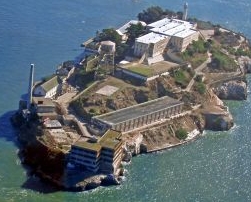
1937 – Theodore Cole and Ralph Roe escaped from the federal prison on Alcatraz Island in San Francisco Bay. Neither was ever seen again. Although officials were quick to conclude the pair perished in the attempt, their remains were never found and their fate remains unknown, making the incident the first to shatter Alcatraz’s reputation as an “escape-proof” prison.
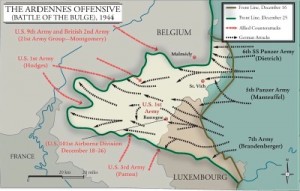
1944 – The 40-day Battle of The Bulge began. With the British and Americans closing in on Germany from the west and the Soviets approaching from the east, Adolf Hitler ordered a massive attack against them by three German armies.
The German counterattack out of the densely wooded Ardennes region of Belgium took the Allies entirely by surprise, and the experienced German troops wrought havoc on the American line, creating a triangular “bulge” 60 miles deep and 50 miles wide along the Allied front. Conditions of fog and mist prevented the unleashing of Allied air superiority, and for several days Hitler’s desperate gamble seemed to be paying off. However, unlike the French in 1940, the embattled Americans kept up a fierce resistance even after their lines of communication had been broken, buying time for a three-point counteroffensive led by British General Bernard Montgomery and American generals Omar Bradley and George Patton.
By the time it all ended, Germany’s last major offensive of the war had cost Hitler 120,000 men, 1,600 planes, and 700 tanks. The Allies suffered, as well, with 80,000 killed, wounded, or missing in action, with all but 5,000 of these casualties being American. It was the heaviest single battle toll in U.S. history.
1950 – In the wake of the massive Chinese intervention in the Korean War, President Harry S. Truman declared a state of emergency. Proclaiming that “Communist imperialism” threatened the world’s people, Truman called upon the American people to help construct an “arsenal of freedom.”
The Soviet Union, which Truman blamed for most of the current world problems in the course of his speech, blasted the United States for “warmongering.” Congress, most of America’s allies, and the American people appeared to be strongly supportive of the President’s tough talk and actions. Truman’s speech, and the events preceding it, indicated that the Cold War – until then just a battle of words and threats – had become an actual military reality.
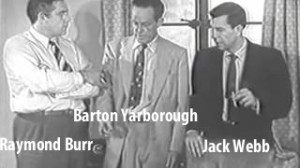
1951 – This is the city: The pilot for Dragnet (titled The Human Bomb) aired on television as a special presentation of the NBC program Chesterfield Sound-Off Time.
Jack Webb, of course, played no nonsense, “just the facts” Sgt. Joe Friday. Friday’s partner, Ben Romero, was played by Barton Yarborough. Four days after the pilot episode aired, Yarborough suffered a heart attack and died at the age of 51. Friday’s boss in the pilot was played by Raymond Burr (later of Perry Mason and Ironside fame).
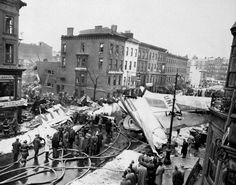
1960 – Two airplanes collided over New York City, killing 134 people (128 on the planes and 6 on the ground). The improbable mid-air collision is the only such accident to have occurred over a major city in U.S. history.
It was a snowy morning in New York when a United DC-8 from Chicago was heading for Idlewild Airport (now John F. Kennedy International Airport) in southern Queens. At the same time, a TWA Super Constellation from Dayton, Ohio, was heading to LaGuardia Airport in northern Queens. Due to the weather, the United flight was put into a holding pattern. When the pilot miscalculated the location of the pattern, the plane came directly into the path of the TWA flight.

1962 – Lawrence Of Arabia starring Peter O’Toole, premiered in movie theaters. The film was nominated for ten Academy Awards and won seven in total including Best Director, Best Sound Editing, Best Film Editing, and Best Picture.
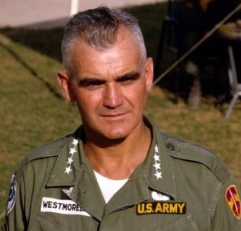
1965 – Gen. William Westmoreland, Commander of U.S. Military Assistance Command Vietnam, sent a request for more troops. With nearly 200,000 U.S. military personnel in South Vietnam already, Westmoreland sent Defense Secretary Robert McNamara a message stating that he would need an additional 243,000 men by the end of 1966.
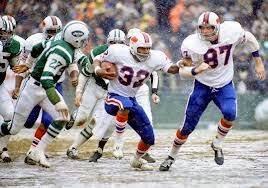
1973 – Buffalo Bills running back Orenthal James “OJ” Simpson became the first player in the National Football League to rush for more than 2,000 yards in a single season.
1979 – The night before the Organization of Petroleum Exporting Countries’ annual price-setting meeting in Caracas, two member states (Libya and Indonesia) announced plans to raise the price of their oil by $4 (Libya) and $2 (Indonesia) per barrel.
The price hike only exacerbated an energy crisis that had been going on since the beginning of 1979. An Iranian oil-field strike and the January revolution had disrupted oil supplies from that part of the Middle East, and an earlier OPEC fee increase had sent prices inching toward an all-time high. By the time the Iranian hostage crisis began in November, Americans were already dealing with the effects of this “oil shock”: long lines and short tempers at gas pumps, panics over gasoline and heating oil shortages, and frustration with the inefficient, gas-guzzling vehicles manufactured by American automakers.
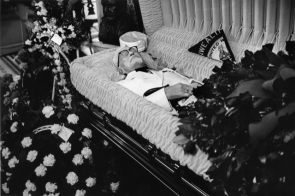
1980 – Harland David “Colonel” Sanders, founder of Kentucky Fried Chicken, died of pneumonia six months after being diagnosed with acute leukemia. He was 90.
His body lay in state in the rotunda of the Kentucky State Capitol in Frankfort after a funeral service at the Southern Seminary Chapel, which was attended by more than 1,000 people. He was buried in his characteristic white suit and black western string tie in Cave Hill Cemetery in Louisville.
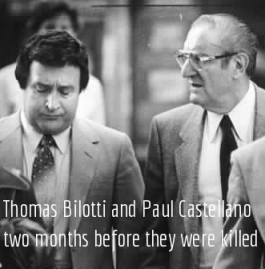
1985 – Reputed organized-crime chief Paul Castellano and Thomas Bilotti were shot to death outside Sparks Steak House in New York City. Castellano and Bilotti – the man Castellano had promoted to underboss just two weeks earlier – were killed on the orders of John Gotti, who assumed leadership of New York’s Gambino crime family.
I spared you the morbid death photos. You can thank me later.

1989 – Federal Judge Robert Vance was instantly killed by a powerful explosion after opening a package mailed to his house near Birmingham, Alabama. Two days later, a mail bomb killed Robert Robinson, an attorney in Savannah, Georgia, in his office. Two other bomb packages, sent to the federal courthouse in Atlanta and to the Jacksonville, Florida office of the NAACP, were intercepted before their intended victims opened them.
DNA profiles were made from the saliva on the stamps, and both the paint on the boxes and the nails that acted as the bomb’s shrapnel were traced back to the manufacturer. Finally, an FBI agent remembered that Walter LeRoy Moody had been convicted in 1972 for setting off a pipe bomb with a similar design to that of the 1989 bombs. A search of Moody’s home failed to turn up evidence linking him to the VANPAC bombs, but bomb experts compared his 1972 bomb to the VANPAC explosives and determined that there was little doubt that the same man had made them all.
In June 1991, a federal jury convicted Moody on charges related to the bombings and sentenced him to seven life terms plus 400 years in prison. In 1997, an Alabama judge sentenced Moody to die in the electric chair for Vance’s murder.
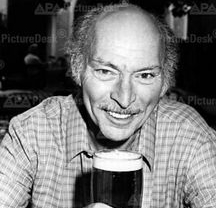
1989 – Actor Lee Van Cleef (appeared in 90 films, including The Man Who Shot Liberty Valance, The Magnificent Seven Ride!, For A Few Dollars More, The Good, The Bad and The Ugly, and over 100 television appearances, including his role as a ninja master in the NBC adventure series The Master) died of a heart attack at the age of 64.
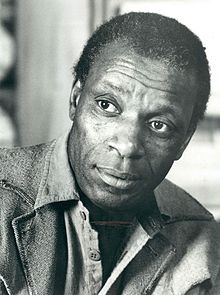
1993 – Actor Moses Gunn (On Broadway: Othello, The Poison Tree, A Hand Is On The Gate … In Films: Shaft, Ragtime, Firestarter, The Iceman Cometh. … On Television: Roots, A Man Called Hawk, Good Times) died from complications of asthma at the age of 64.
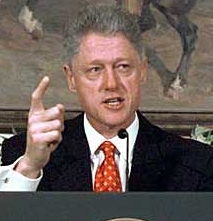
1998 – President Bill Clinton announced he had ordered air strikes against Iraq because it refused to cooperate with United Nations weapons inspectors. Clinton’s decision did not have the support of key members of Congress, who accused Clinton of using the air strikes to direct attention away from ongoing impeachment proceedings against him.
Ultimately, the American public’s attention, and that of the press, stayed fixated on Clinton and his battle to save his presidency. Both the air strikes and the impeachment threat proved anti-climactic. Clinton was acquitted by the Senate in February 1999 and the air strikes on Iraq failed to intimidate Hussein into allowing weapons inspectors full access to Iraq’s weapons facilities.
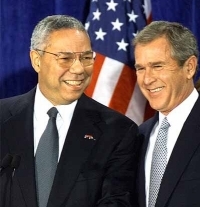
2000 – President-elect George W. Bush selected Colin Powell to become the first African-American secretary of state.
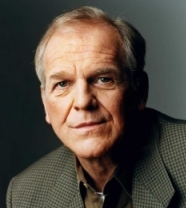
2005 – Actor John Spencer (The Patty Duke Show, Presumed Innocent, The Negoiator and best known for playing White House Chief of Staff Leo McGarry on television’s West Wing) died of a heart attack at the age of 58.
Compiled by Ray Lemire ©2015 RayLemire.com. All Rights Reserved.
